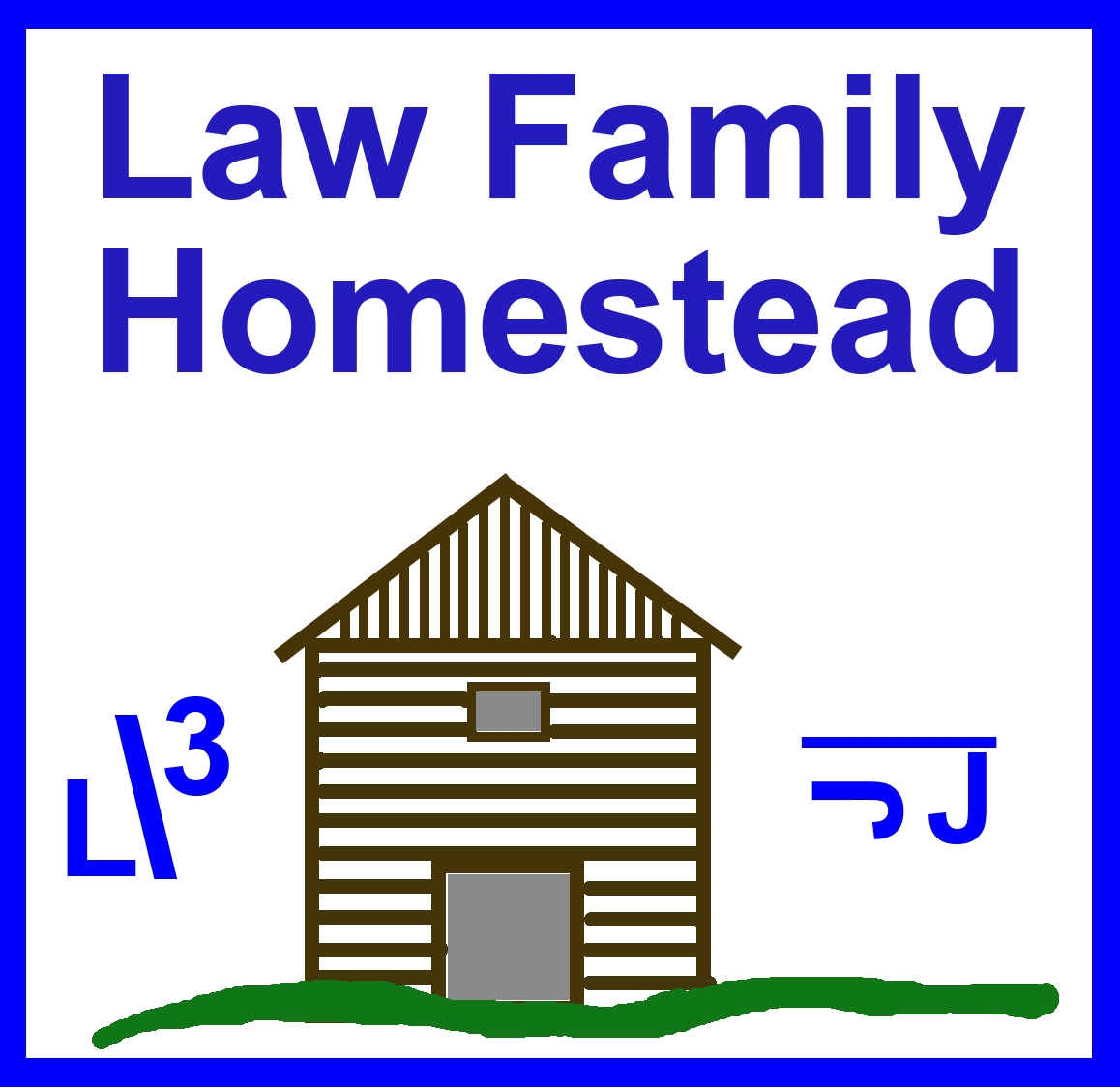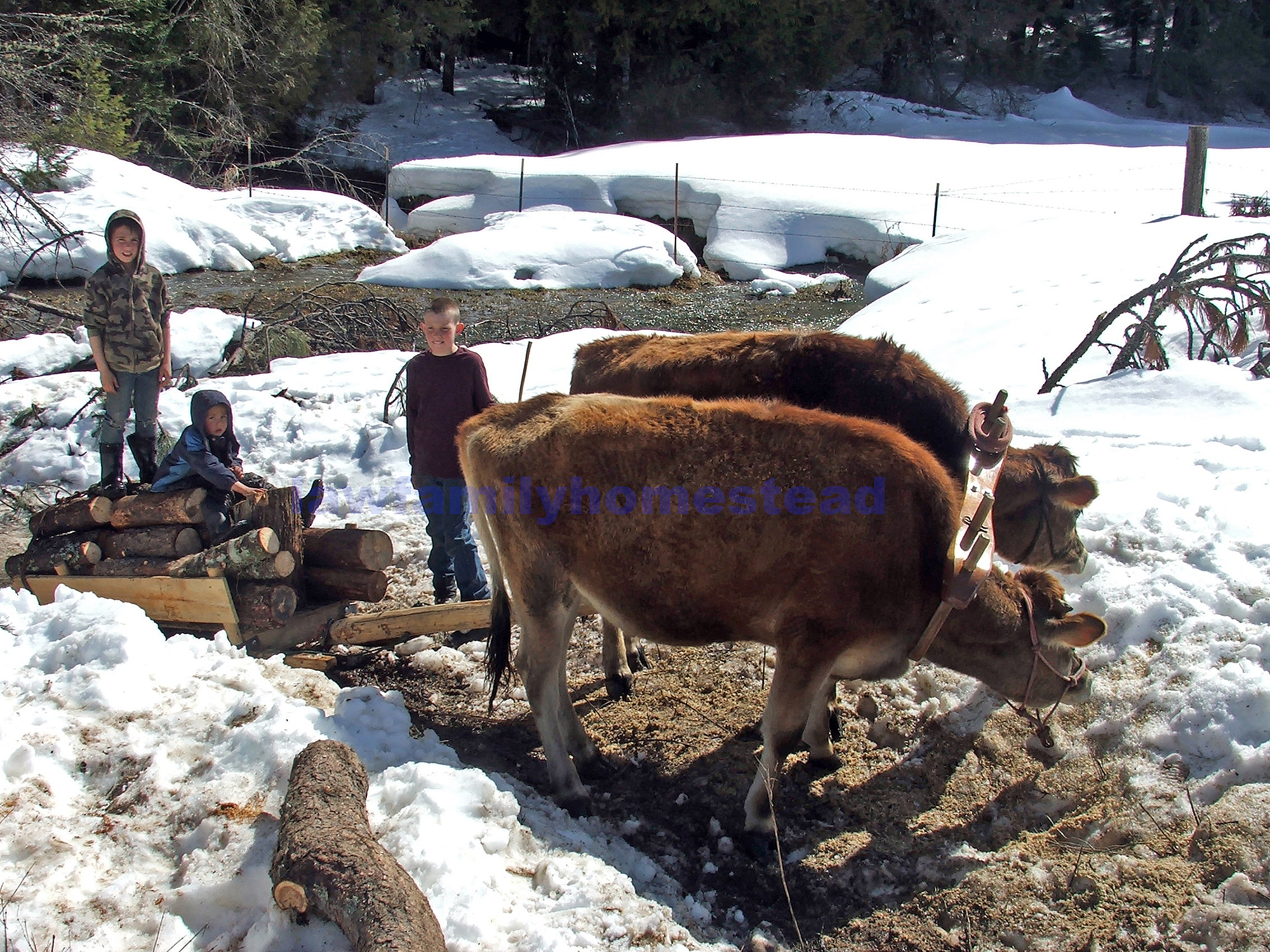Our snow has been gone now for some time, replaced with muck-boot-deep mud and torrential rains for the last few weeks. Needless to say oxen training had an enforced break due to the weather. And what is the culmination of this winter's training and work? Have the hours spent on the team been worth it? What have we learned, what have the oxen learned, and what has CW learned? Has CW achieved his ambition of two years ago, to drive his own team of oxen?
We have spent roughly 42 days out of the last three months working our oxen. Some days they worked an hour, other days they worked all day as their attention span grew along with their knowledge and muscle tone.
CW has helped with training each step of the way. But the goal was to get the team to a point where CW could handle them by himself. Over the last few weeks we have concentrated the schooling toward that end.
Here several of the boys have loaded the sled by themselves, and CW has tied it down. The oxen are yoked and he is ready to drive them out by himself.
We are teaching the team to be driven from behind as well as leading them. Here the boys are ready to set out on their voyage up to the house to drop off their load of firewood and return for another load.
And away they go, four passengers and a load of firewood. A prideful moment for the young driver - to load your own sled and drive your own team. This was not his first time up as he had to weather some disappointing moments when the team tested his authority and vigilance.
CW driving from the front once up near the yard.
The fun is over now and it's time to unload the wood from the sled onto the growing woodpile by the house.
As the snow was rapidly disappearing under sunny skies Kit and the team quickly grabbed the last of the firewood and log lengths from the other side of the creek before it got to swift and wide for the team, or at least the crew, to make it across.
While Kit was dragging and throwing the last cedar fence poles across the creek, CW was in charge of dragging them up the hill with the team.
The team will now either follow you or be driven from behind. Here CW is leading them where he wants them to go.
CW has gotten them to stand by themselves while he unloads. He sticks his ox goad in the ground right in front of them. I haven't seen them move on him, until they are given the okay.
Now it is time to unchain and stack the poles.
There's the beginning of a strong work ethic cultivated in both the team and the boys this winter.
And the culmination of this winters endeavor? Five cords of firewood! All boys but the youngest lent a hand to some degree in getting the wood to the top of the hill.
The education will continue this summer as the wood dries out and the boys split and stack that five cords in preparation for winter burning.
Having never before trained cattle to do anything other then produce milk or move off from a person on horseback or foot, we weren't sure we could train oxen. But the oxen have been surprisingly laid back and easy to train. We've spent a lot of time reading books on the subject and then going out and trying it live on the team.
What led to the oxen's replacement by horses at the end of the 19th Century? Were they unproductive and inefficient? No, it appears that as prosperity and the availability of abundant natural resources increased, so did the demand for a faster rate of movement to transport goods over longer distances. The family milk cow on the American farm prior to the industrial revolution fed most of the animals and humans on the farm and then raised the steers for future oxen which could later be turned into beef when fully matured.
Localized markets within a few miles of these small farms consumed the surplus of their produce in return for goods which the farms could not produce. This highly productive model allowed for the division of labor.
Specialized and diverse farming operations could now invest surplus capitol in raising and training the horse which would later pay for itself by moving products several times faster than an ox which meant longer distances to new markets farther away.
Other breeds of cattle were introduced which produced more beef in a shorter amount of time. The single dairy cow which initially served the farm in beef, dairy, and transportation needs was now replaced by three distinct and specialized operations. Later steam, and then the internal combustion engine would replace the horse to speed up this process to a much greater degree. Economic expansion and prosperity due to the abundance of resources dictated this.
Is it possible for oxen to find their place again in 21st Century America? We think so. They can easily be an option for someone who does not have the capital to invest in equipment to do their own forest management, as garden tractors, or other agricultural endeavors. The ox team has the capability to keep our family active and productive through the winter no matter the weather conditions.
Are oxen economically able to sustain themselves through the work they will perform for us? We think so. I already have a list of things I think CW and his team of oxen are able to do this spring and summer. Stay tuned to see what's next on their list!
















